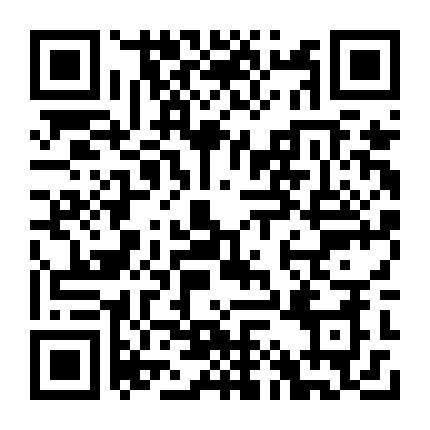小学英语介词学习方法
- 2018-12-17 15:18:00
- 张秀宇 原创
- 10817
在小学英语中,介词学习的比重占了课程的很大一部分,掌握好介词也是为以后学英语奠定基础的关键之一。
一、at,in与on在时间方面的用法
at表示时间的一点;
in表示一个时期;
on表示特殊日子。
如:
He goes to school at seven o'clock in the morning.
他早晨七点上学。
Can you finish the work in two days?
你能在两天内完成这个工作吗?
Linda was born on the second of May.
琳达五月二日出生。
1. at后常接几点几分,天明,中午,日出,日落,开始等。
如:
at five o'clock (五点),
at down (黎明),
at daybreak (天亮),
at sunrise (日出),
at noon (中午),
at sunset (日落),
at midnight (半夜),
at the beginning of the month (月初),
at that time (那时),
at that moment (那会儿),
at this time of day (在一天的这个时候)。
2. in后常接年,月,日期,上午,下午,晚上,白天,季节,世纪等。
如:
in 2006(2006年),
in May,2004 (2004年五月),
in the morning (早晨/上午),
in the afternoon (下午),
in the evening (晚上),
in the night (夜晚),
in the daytime (白天),
in the 21st century (21世纪),
in three days (weeks/month)三天(周/个月),
in a week (一周),
in spring (春季)。
3. on后常接某日,星期几,某日或某周日的朝夕,节日等。
如:
on Sunday (星期日),
on a warm morning in April (四月的一个温暖的上午),
on a December night (12月的一个夜晚),
on that afternoon (那天下午),
on the following night (下一个晚上),
on Christmas afternoon (圣诞节下午),
on October 1,1949 (1949年10月1日),
on New Year’s Day (新年),
on New Year’s Eve (除夕),
on the morning of the 15th (15日的早上)等。
二、常用方位介词:in,on,to
在范围之内用in,在范围之外,如果两地接壤就用on 不接壤的用to
如:
Beijing is in the north of China.
Japan is to the east of China.
Shanxi Province is on the west of Hebei Province.
三、更多介词
表示时间:at, in, on, by, through
表示附近:near, by, beside, at
表示地点:at, in, on
表示除外:besides, except, except for, but
表示方位:in, to, on
表示上下:above, below, over, under, on, beneath
表示方式:by, through, with
表示原因:for, from, at, through, with, because of, due to, owing to, on account of, thanks to
表示价格比率对比:at, by, for, against
表示属性特性:of, with
还有:since, inside, out of, onto, into, without, instead of, from behind, until from, concerning, considering, following, including, regarding, respecting, saving等
四、更多介词用法
1.at表示"在......处",一般指较小的比较具体的地点。
如:
He isn't at school. He is at home.
他不在学校,他在家。
2.in表示"在......内部;在......里面"的意思。
如:
What is in the box?
盒子里有什么?
3.on表示"在某物的上面",但两者互相接触。
如:
My books are on that table.
我的书在那张桌子上。
4.under表示"在某物垂直的正下方",两者之间不接触。
如:
My cat is under my chair.
我的猫在我的椅子下。
5.behind表示"在某物体的后面"。
如:
The broom is behind the door.
笤帚在门后。
6.in front of表示"在......的前面",正好与behind相反。
如:
There are some big trees in front of our classroom.
我们教室前面有几棵大树。
7.near表示"在某物体的附近",意为"接近、靠近"。
如:
The ball is near the door.
球在门旁边。
8.介词in, on, under, behind是表示静态位置的介词。
五、介词用法口诀
早、午、晚要用in,at黎明、午夜、点与分。
年、月、年月、季节、周,阳光、灯、影、衣、冒in。
将来时态in...以后,小处at大处in。
有形with无形by,语言、单位、材料in。
特征、方面与方式,心情成语惯用in。
介词at和to表方向,攻击、位置、恶、善分。
日子、日期、年月日,星期加上早、午、晚,
收音、农场、值日on,关于、基础、靠、著论。
着、罢、出售、偷、公、假,故意、支付、相反,准。
特定时日和“一……就“,on后常接动名词。
年、月、日加早、午、晚,of之前on代in。
步行、驴、马、玩笑on,cab,carriage则用in。
at山脚、门口、在当前,速、温、日落、价、核心。
工具、和、同随with,具有、独立、就、原因。
就……来说宾译主,对、有、方状、表细分。
海、陆、空、车、偶、被by,单数、人类know to man。
this、that、tomorrow,yesterday,next、last、one。
接年、月、季、星期、周,介词省略已习惯。
over、under正上下,above、below则不然,
若与数量词连用,混合使用亦无关。
beyond超出、无、不能,against靠着,对与反。
besides,except分内外,among之内along沿。
同类比较except,加for异类记心间。
原状because of, owing to、 due to表语形容词
under后接修、建中,of、from物、化分。
before、after表一点, ago、later表一段。
before能接完成时,ago过去极有限。
since以来during间,since时态多变换。
与之相比beside,除了last but one。
复不定for、找、价、原,对、给、段、去、为、作、赞。
快到、对、向towards,工、学、军、城、北、上、南。
but for否定用虚拟,复合介词待后言。
ing型由于鉴,除了除外与包合。
之后、关于、在......方面,有关介词须记全。
in内to外表位置,山、水、国界to在前。

关注智慧山微信公众号(zhihuishan2013)后,在公众号里回复以下关键字,即可得到相应资源!
公开课、作文、复习、试卷、知识点、活动、拼音、字母、钟表、看图写话、故事、双语故事、成语、常识、APP、语文、数学、英语、百家姓、三字经、唐诗三百首、自助查询、超级口算
- 儿童故事
- 教育资源
- 小学语文
- 小学英语
- 小学数学
- 资源下载
- 专家讲座
- 智慧山微课
- 少儿英语
- 专项复习
- 各科教材
- 课外读物
- 育儿博客
- 书籍推荐
- 胎教音乐
- 经典儿歌
- Scratch编程
- 一年级新生
- 饮食健康
- 学龄前
- 儿童电影
- 成长故事
- 学习宝典
- 幼小衔接
- 古诗文
- 影视动画
- 科学小实验
- 精选课程
- 书法比赛专用
- 首页课程介绍
- 小学指南
- 智慧山活动
- 说明
- 家庭教育
- 晒饭—一早一晚
- 儿童编程
- 编程网站
- 智慧山图书馆
- 小升初
- 英语学习
- 智慧家庭教育




